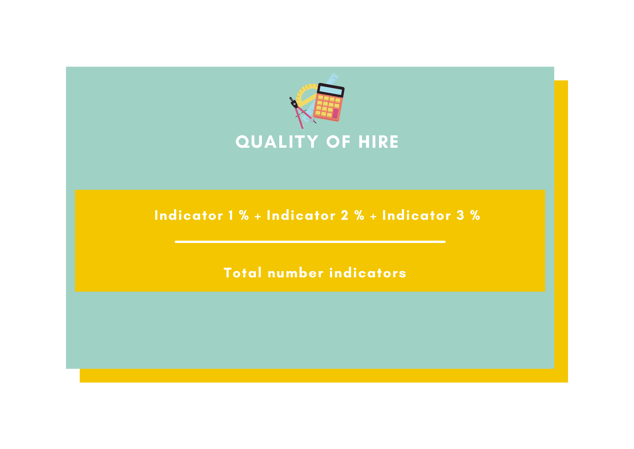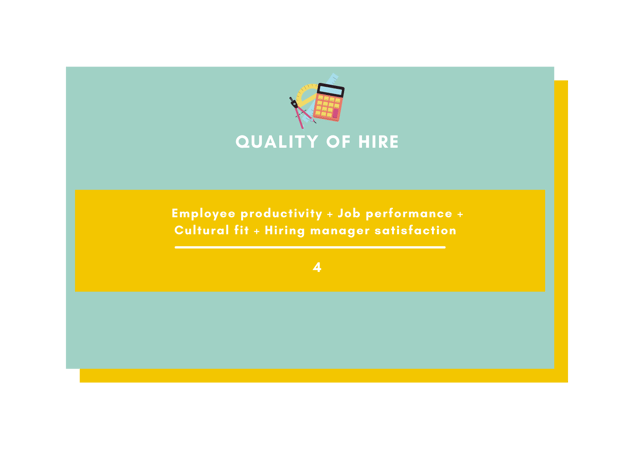Quality of Hire Metrics
When it comes to HR and recruitment metrics, quality is quantifiable, which is why many of today’s most successful organizations are looking to their data, and specifically at quality of hire metrics, to improve the quality of their recruitment efforts and reduce turnover and absenteeism.
Tracking key quality of hire metrics that measure various components of the recruitment process has become a necessity. LinkedIn even released a report on the metrics most frequently used by HR leaders today which included many of the topics that we’ll cover on this page.
What is quality of hire?
Quality of hire measures, in essence, the value that new hires provide to a company. It evaluates how much new hires contribute to long-term success and is usually based on their overall performance and time spent with the employer. While quality of hire measures the success of a new hire, it's equally useful in evaluating the effectiveness of an organization’s recruitment process on the whole.
Why is quality of hire important?
Understanding quality of hire metrics helps to uncover weak points in a recruitment process and adjust accordingly. For example, assessing the quality of hire metrics may help to point out recruitment sources that are lower quality or more expensive (without being higher quality). When such things are identified, they can be addressed so that efforts can be adjusted to focus on more optimal hiring sources.
Quality of hire metrics is also now widely used to evaluate the performance of HR and recruitment teams so that they can improve and make better quality hires over time.
What are some important quality of hire metrics?
There is no universal method in which to measure quality of hire, and nor should there be because it will vary from company to company and from industry to industry. There are many variables that make up the quality of hire, but there are some generally agreed-upon things for organizations to evaluate. These include:
- Retention rates: this one is unsurprising because, generally, the longer someone works for a company, the more value they are likely to provide to it. By measuring things like employee turnover and absenteeism, you will have a better understanding of your overall quality of hire.
- Job performance: things like performance reviews are often included in quality of hire calculations.
- Measuring hiring manager satisfaction: surveys are often used to gather the satisfaction levels of hiring managers which is a useful indicator of quality of hire. This shouldn’t be taken in isolation because, as with other measures, it can be quite subjective.
- Tracking pre-hire metrics: focusing on pre-hire metrics helps employers identify hiring issues that might affect quality of hire. There are both qualitative (fit of ideal candidate profiles, awards or certifications attained, referred by existing top performers, etc.) and quantitative (scores on aptitude tests, referral rates from recruiters, etc.) ways to track pre-hire metrics.
- Ramp-up time: measuring the amount of time it takes for a new hire to reach full productivity is another frequently used measure of quality of hire.
- Employee productivity: this is often measured by the percentage of goals or targets achieved per employee.
How to calculate quality of hire?
Since there are so many variables, which differ from company to company, that go into measuring quality of hire the formula for calculating this figure should essentially aim to calculate an average quality score for all new hires at an organization instead of at the individual level.
To do this, try and score each quality indicator out of a standardized total (something like 100). The formula could look like this:

And here as what a specific example might look like:

Finally, to calculate the effectiveness of your entire hiring and recruitment process, you could employ a formula like this:

As is probably evident, its important to contextualize these formulas to adequately convey your objectives as a company. They should act as a starting point, not the end-all-be-all. Especially because many quality of hire metrics are subjective, findings are often taken with a grain of salt (for example, placing a numeric value on things like cultural fit is tough and factors like this shouldn’t be a sole determinant of quality of hire).
Standardizing the way in which you calculate quality of hire will give you a benchmark to improve how you recruit for your team. Quality of hire gives you valuable insights, regardless of how they’re used, into team efficiency and overall recruiting efforts.


